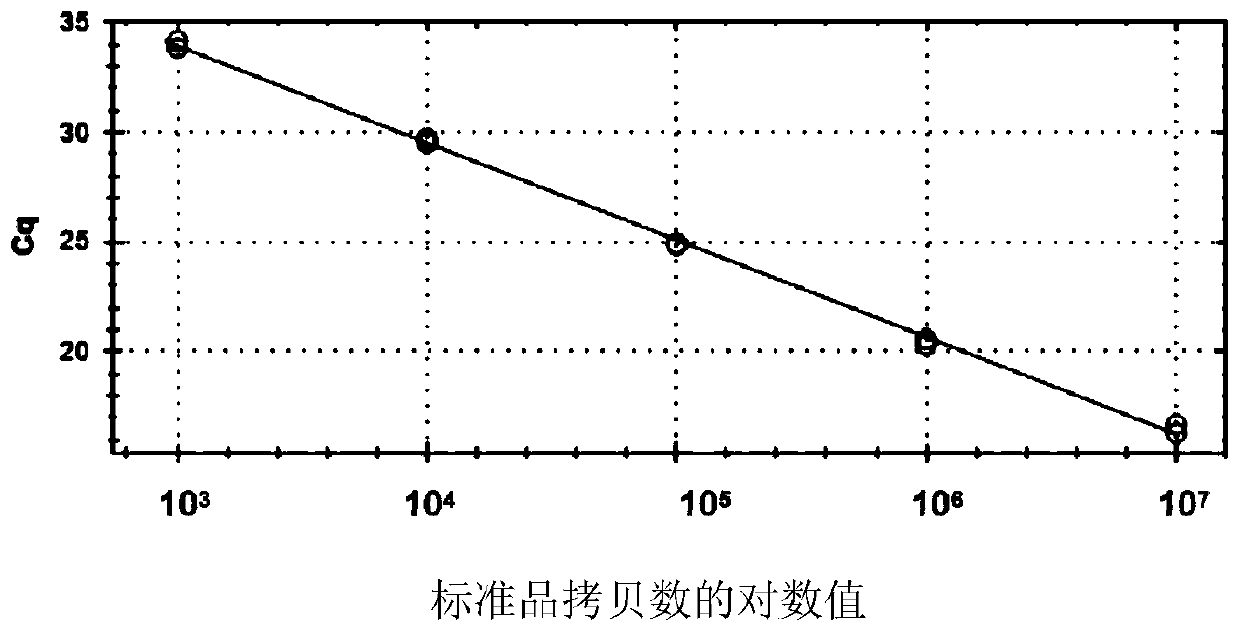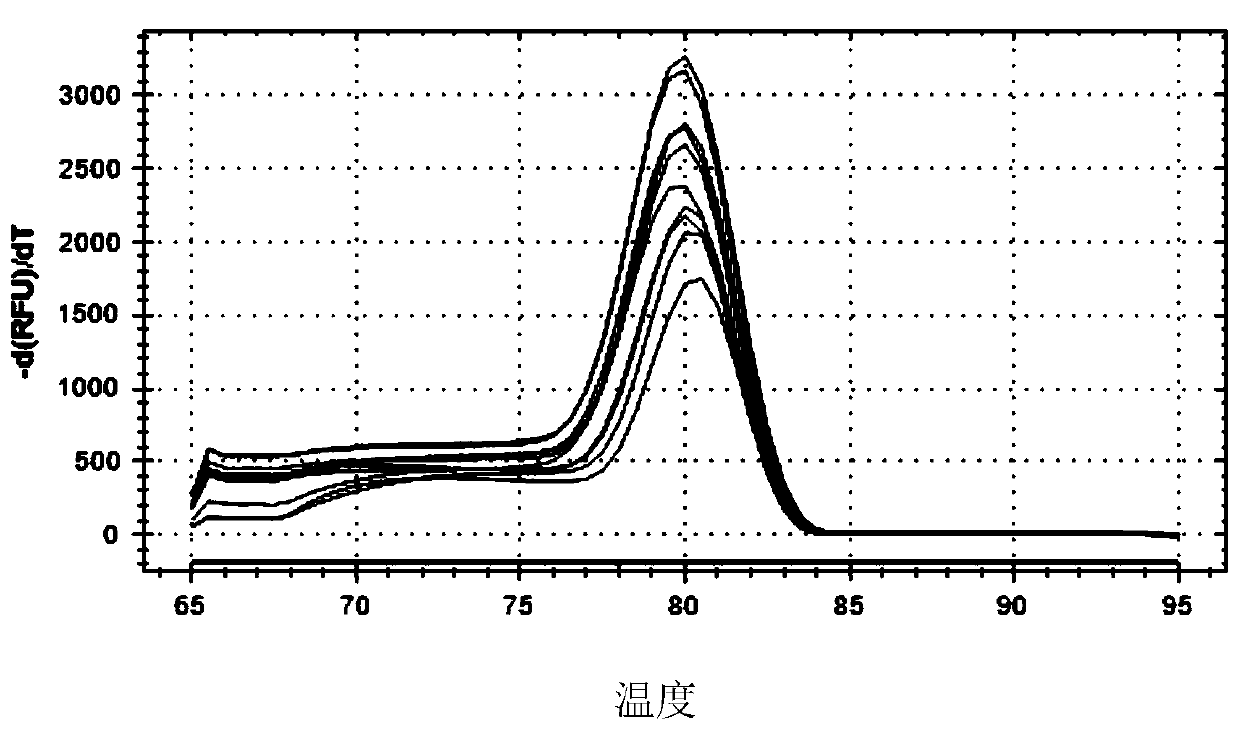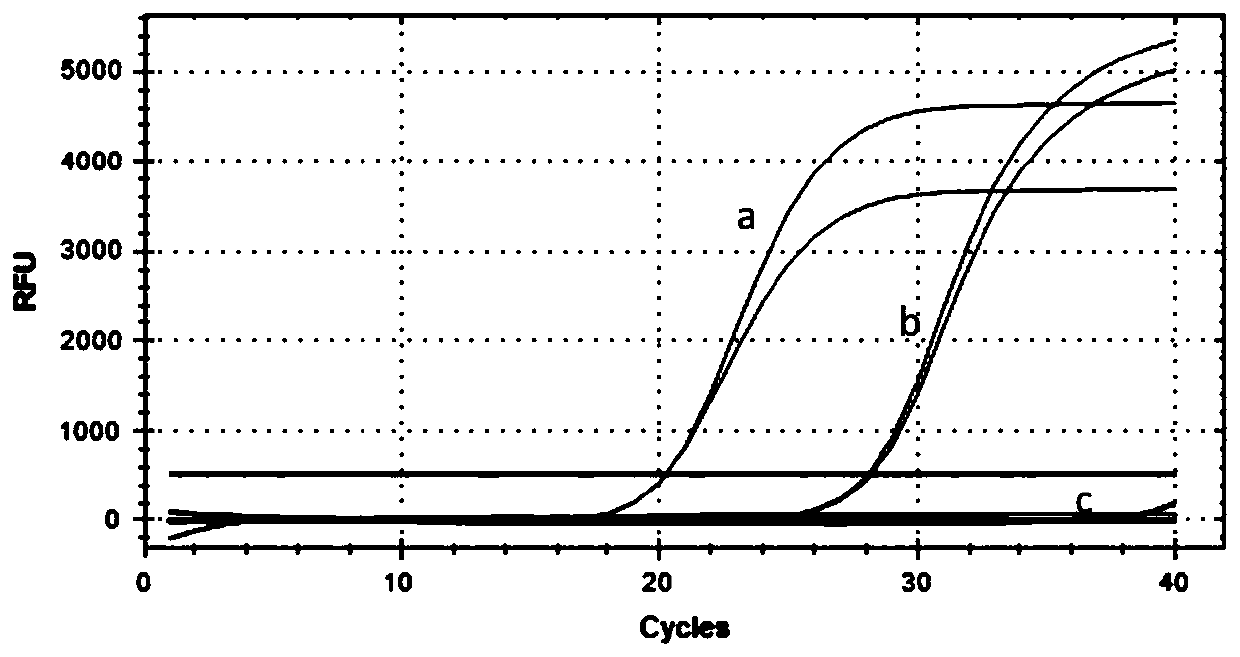Method for identifying new goose parovovirus
A goose parvovirus, a new type of technology, applied in biochemical equipment and methods, microbial determination/inspection, DNA/RNA fragments, etc., can solve the problems of economic loss, difficult differential diagnosis, and shortening of the upper beak in the duck industry. Achieve rapid analysis, high sensitivity and good repeatability
- Summary
- Abstract
- Description
- Claims
- Application Information
AI Technical Summary
Problems solved by technology
Method used
Image
Examples
Embodiment 1
[0049] According to the nucleic acid sequences of NGPV, MDPV and GPV genomes, the present invention designs a pair of primers for fluorescent quantitative PCR; after a large number of screenings, the present invention screens out a group of primers with high sensitivity and strong specificity, the sequence of which is as follows:
[0050] NGPV-F: 5'-CACTTCCTGGCGCGCAAAATATTT-3' (SEQ ID NO: 1);
[0051] NGPV-R: 5'-TGCGTCACCGGAAGCAC-3' (SEQ ID NO: 2).
Embodiment 2
[0052] Embodiment 2 Positive standard substance preparation, fluorescent quantitative PCR detection method
[0053] 1) Preparation of standard samples
[0054] In order to draw the standard curve of fluorescent quantitative PCR, we extracted the DNA of the new goose parvovirus as a PCR template, used primers to amplify the target sequence, and connected the amplified product into the vector to obtain the vector of the target sequence of the new goose parvovirus , the positive standard of the new goose parvovirus.
[0055] 2) Fluorescent quantitative PCR detection of positive standard samples
[0056] The new goose parvovirus positive standard in the above steps was diluted for detection.
[0057]The diluted plasmid standard was amplified under optimal amplification conditions, and the fluorescence quantitative PCR amplification reaction system was:
[0058]
[0059] The PCR amplification reaction program was: pre-denaturation at 95°C for 3min; denaturation at 95°C for 15...
Embodiment 3
[0062] Embodiment 3 A kind of fluorescent quantitative PCR detection method
[0063] 1) Nucleic acid extraction from samples: the samples to be extracted contained 2 livers positive for novel goose parvovirus, 3 livers positive for classical goose parvovirus and 2 livers positive for muscovy duck parvovirus.
[0064] 2) Using the extracted nucleic acid as a template to carry out fluorescent quantitative PCR, the reaction system is:
[0065]
[0066] The PCR amplification reaction program was: pre-denaturation at 95°C for 3min; denaturation at 95°C for 15s; annealing at 60°C for 60s; cycle 39 times.
[0067] At the same time, a negative control group and a positive control group were set up, wherein the negative control was physiological saline. The positive control group uses the solution containing the positive standard product of the new goose parvovirus gene as the nucleic acid template.
[0068] 3) Result analysis: The PCR product is tagged and tracked with the fluore...
PUM
 Login to View More
Login to View More Abstract
Description
Claims
Application Information
 Login to View More
Login to View More - R&D
- Intellectual Property
- Life Sciences
- Materials
- Tech Scout
- Unparalleled Data Quality
- Higher Quality Content
- 60% Fewer Hallucinations
Browse by: Latest US Patents, China's latest patents, Technical Efficacy Thesaurus, Application Domain, Technology Topic, Popular Technical Reports.
© 2025 PatSnap. All rights reserved.Legal|Privacy policy|Modern Slavery Act Transparency Statement|Sitemap|About US| Contact US: help@patsnap.com



